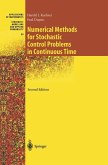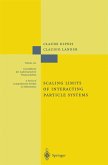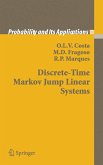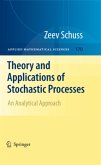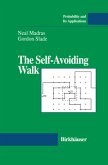The central theme of this book concerns Feynman-Kac path distributions, interacting particle systems, and genealogical tree based models. This re cent theory has been stimulated from different directions including biology, physics, probability, and statistics, as well as from many branches in engi neering science, such as signal processing, telecommunications, and network analysis. Over the last decade, this subject has matured in ways that make it more complete and beautiful to learn and to use. The objective of this book is to provide a detailed and self-contained discussion on these connec tions and the different aspects of this subject. Although particle methods and Feynman-Kac models owe their origins to physics and statistical me chanics, particularly to the kinetic theory of fluid and gases, this book can be read without any specific knowledge in these fields. I have tried to make this book accessible for senior undergraduate students having some familiarity with the theory of stochastic processes to advanced postgradu ate students as well as researchers and engineers in mathematics, statistics, physics, biology and engineering. I have also tried to give an "expose" of the modem mathematical theory that is useful for the analysis of the asymptotic behavior of Feynman-Kac and particle models.
From the reviews: "I also recommend this book as informal reading for anyone intersted in the subject, preferably with a strong background in Markov processes; in particular, for someone also familiar with one of the many fields to which the book applies Feynman-Kac models. The book is entertaining and informative." Journal of the American Statistical Association, December 2005 "This book takes the readers in a clear and progressive format from simple to recent and advanced topics in pure and applied probability. ... With practical and easy to use references, as well as deeper and modern mathematics studies, the book will be of use to engineers and researchers in pure and applied mathematics. Also researches in statistics, physics, biology, and operation research who have a background of Probability and Markov chain theory, can benefit from the monograph." (Lucien Lemmens, Physicalia, Vol. 57 (3), 2005) "Pierre Del Moral has produced an extraordinary research and reference book which will be of great use to a large and diverse scientific and engineering community. The book deals in detail with convergence theorems for and applications of so-called Feynman-Kac models and their interacting particle representations. ... The book's main contribution is twofold ... provides excellent models amenable to particle approximation. Del Moral is best known for his research ... . The book contains many references to this branch of his work." (Mathematical Reviews, 2005) "Examples in engineering science, Bayesian methodology, particle and statistical physics, biology, and applied probability and statistics are given to motivate the study of the Feynman-Kac models in this book. ... can serve as the textbook for an entire course on Feynman-Kac Formulae and particle system approximation. It can also serve as a main reference for courses on topics like stochastic filtering, mathematical models for population genetics, mathematical biology, etc." (Jie Xiong, Zentralblatt MATH, Vol. 1130 (8), 2008)




